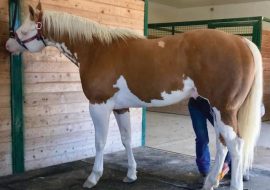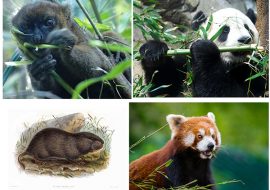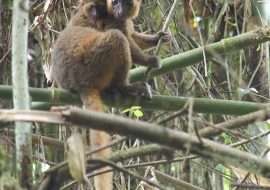About the Author: Katherine Solari is a Postdoctoral researcher and the Associate Director of Genomics for the Program for Conservation Genomics at Stanford University. Her PhD research with Elizabeth Hadly focused on investigating the mechanisms underlying hypoxia tolerance in pikas (genus Ochotona). Her current work with the Program for Conservation Genomics focuses on developing genomic-based tools […]
Tag: Mammals
What does the history of human hybridization share with some of our closest relatives?
About the author: Marcella is an NSF postdoctoral fellow currently working in David Toews’ lab on the genetics of speciation and hybridization. Her current projects involve evolutionary genomics of adaptation, species divergence, and gut microbiome structure in wood warblers. Marcella received her PhD and MS in Ecology and Evolutionary Biology at the University of Michigan. […]
Bridging the conservation genetics gap to save Britain’s last wild-living felid
About the author: Dr Helen Taylor is a conservation geneticist who studied for her PhD in New Zealand, working on inbreeding in little spotted kiwi. She went on to undertake postdoctoral research on inbreeding and male fertility in passerines and, at that point, became interested in the integration of genetics into conservation management. After eight years […]
Chronic wasting disease and its threat for endangered deer species
About the author: Nisha Dwivedi a conservation biology masters student at Lund University. As part of her thesis project she is currently exploring genetic variation at the immune gene level in different rodent species. When thinking of pathogens, we usually imagine bacteria, viruses, or even parasites. Indeed, despite their important differences, most […]
A horse of a different color patterning mutation
Connecting genotypes to the complex phenotypes they produce is a fundamental goal of genetics. Variation in coat color pigmentation, partly due to the relative ease at which different patterns can be identified, is one of the best-characterized traits at the genetic level, with examples from sheep (Zhang et al., 2017), cattle (Li et al., 2016), […]
Is European bison really back?
Humans constantly interact with their environment. They modify habitats, transfer species from one place to another, domesticate some species while contributing to the extinction of others. To reverse the process of extinction, we’ve been reintroducing taxa since the 1800s. Reintroduction refers to the action of establishing self-sustaining and healthy populations of extinct or critically endangered […]
What happens when hunting history, whale culture, genetics, and an international collaboration work towards a common goal?
Right whales were given their name because they were the rightwhales to hunt: they swim slowly near the ocean’s surface and make predictable annual migrations to easily accessible bays along the coast. They were hunted to near extinction before international protections were enacted in 1935. As the species recovered, researchers have acquired a myriad of […]
Surviving cyanide – one path or many?
Cyanide is deadly – to most things. In high enough doses it blocks the body’s ability to create energy by interrupting cellular respiration. But even at non-lethal doses it has knock-on effects throughout the body. Despite this, a few mammals eat it regularly. In my last post, I described how I found multiple ways in […]
Surviving Cyanide – Part One
Eating is dangerous. Are you drinking a glass of wine? Perhaps planning pesto for dinner? The very flavors that attract us to those foods come from toxins plants produce to protect themselves. We humans know to the deadly ones. But imagine you’re a wild herbivore – every bite you take is a risk. Bamboos, and […]
Mountains high … valleys wide … can keep me from getting to you
The Sierra Nevada range towers over the Basin below, cutting the skyline with a jagged edge as far as the eye can see. Mountain ranges, like the Sierra Nevada, are symbolic of western North America and present barriers not only to most day hikers, but to many plants and animal too. For many alpine taxa, […]








